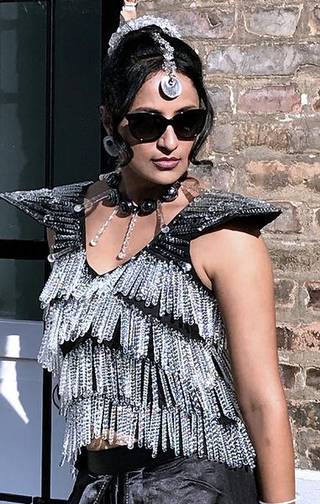For the founder of Goli Soda Glass Studio, it is a captivating, understated medium of art
K Radhika remembers staring at the flames of the kiln long before her first glass art class at Ohio State University. “I would go to the classroom and just watch the glass melt in the fire for hours, but never do anything. I used to feel so intimidated,” she recalls. That was back in 2008. Today, the 39-year-old runs her own glass making studio, Goli Soda Glass Studio at Palavakkam.
Having returned to Chennai in 2016, after 20 years of life in the US, Radhika opened the studio last year and has been holding workshops on lamp working. “I think Goli Soda bottles have been our first memory of glass that is quirky and fun,” she says.
When I meet her, she is demonstrating how to join two thin tubes of glass. “You have to make sure that both pieces of glass have the same co-efficiency,” she explains. She later creates even thinner stringers out of the tubes, heating one end and plucking the molten glass out like cheese from a pizza: the stringers harden instantly.
She bends down on her seat, curling the end of a glass stringer in each hand simultaneously, till the fire fuses them to one sphere at the centre. A blue glass pendant with a white petal design inside it lies next to her on a graphite holder, fresh off the flame. The petals look like they are blooming upwards inside the glass. “We call it the implosion technique — creating a lens effect, it’s been very popular for the past 20-30 years,” says Radhika.
She shows us how it’s done, gathering a sphere of glass on one end and flattening it to give it a semi-hemispherical shape. She exposes the base to a light flame simultaneously etching patterns on it with a coloured glass pen. The surface of the sphere is then heated further so that it gathers below the design, lifting it up inside and giving the impression that the design has been frozen in glass mid-implosion.
“The glassmakers of Murano used this technique a lot. It used to be their trade secret once,” says Radhika.
In her other workshops, she teaches her students how to cut and reuse old glass bottles. “You have to give the bottle a thermal shock. It’s basically creating a fault line, heating it along that line and then dunking it in ice cold water to break it,” she explains.
Reduce, reuse, recycle
Radhika sources all her glass by going to the various pubs and bars along ECR, sack in tow. She recycles most of the glass in her studio, throwing away only the unusable pieces.
When she came to Chennai, she was surprised at the lack of a ‘glass community’ in the city. A ‘full-time mom’, as she calls herself, she then decided to run her own studio. “Glass, as a medium, is very exciting and challenging. You only have so much time to finish one piece. It’s not like painting, where you can take a break, come back and paint again. It’s a one-shot thing and if you go wrong, you just have to start all over again,” she says.
And then of course, there is the captivating beauty of glass, its translucence. Radhika wants people to not think of glass as intimidating. She recently participated in the Glass Conference 2018 at Murano, where designers showcased outfits made majorly out of glass. She fashioned a black V-neck top with icicle-like frills of glass hanging from it. The outfit was completed with a glass necklace and a gajra made of glass flowers that had been sewn together. Says Radhika, “I want to experiment further with glass in traditional Indian clothing. People see glass as this fragile thing. But I want to make it fun!”
K Radhika can be contacted at 9566105313.
source: http://www.thehindu.com / The Hindu / Home> Entertainment> Art / by Sweta Akundi / July 11th, 2018

